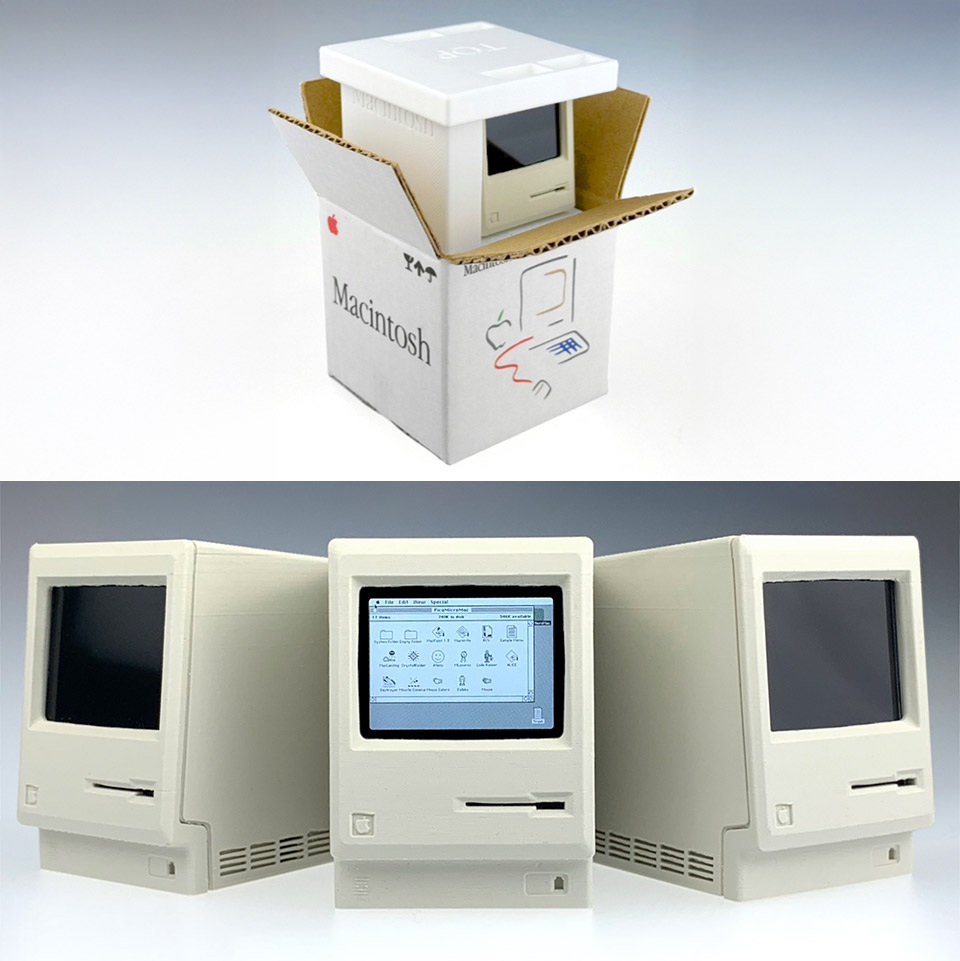
In a world where computers keep getting smaller, Nick Gillard has crafted something extraordinary: the Pico-Mac-Nano, a fully functional replica of the 1984 Apple Macintosh that stands just 62mm tall. This miniature marvel, small enough to fit on a Barbie doll’s desk, is a nostalgic nod to the past packed with modern ingenuity. It’s not just a toy—it’s a working computer that runs classic Mac software, connects via USB, and even sports a tiny screen that mimics the original’s iconic black-and-white display.

Gillard’s journey began with a spark of inspiration from another project, the Pico Mac by Matt Evans, which used a Raspberry Pi Pico to emulate the original Macintosh. “I stumbled across the crazy cheap Raspberry Pi Pico and took my first foray into micro-controllers,” Gillard shares on his 1BitRainbow blog. “Searching for what others had done with the Pico led me to pico-mac… I giggled like a little girl when that black & white, 512 x 342 pixel Macintosh desktop appeared on my VGA monitor.” That giggle-inducing moment set the stage for an ambitious goal: to shrink a Macintosh 128K into something barely bigger than a matchbox.
- SIZE DOWN. POWER UP — The far mightier, way tinier Mac mini desktop computer is five by five inches of pure power. Built for Apple Intelligence.*...
- LOOKS SMALL. LIVES LARGE — At just five by five inches, Mac mini is designed to fit perfectly next to a monitor and is easy to place just about...
- CONVENIENT CONNECTIONS — Get connected with Thunderbolt, HDMI, and Gigabit Ethernet ports on the back and, for the first time, front-facing USB-C...

At the heart of the Pico-Mac-Nano lies the Raspberry Pi Pico Zero, a compact version of the RP2040 microcontroller that powers this tiny titan. Unlike the original Macintosh’s 68000 processor with a mere 128k of RAM, the Pico Zero boasts more processing power and over twice the memory, making it a capable emulator of the 1984 classic. Gillard swapped the standard Pico board for the smaller Pico Zero from WaveShare, which fits neatly where the Macintosh’s logic board would sit. “That fitted nicely where the Macintosh logic board would have been with its USB-C port presented on the rear casing where the ports would be … sweet!” Gillard boasts.

The screen is where the Pico-Mac-Nano truly shines. Gillard hunted for the smallest high-resolution LCD he could find, settling on a 2-inch TFT panel with a native 480 x 640 pixel resolution. To keep things authentic, he drives it at 480 x 342 pixels in portrait mode, mimicking the original Macintosh’s 512 x 342 display. “The size was driven by the screen,” Hackaday explains, noting that Gillard avoided rewriting the Pico Mac firmware to rotate the display, a clever compromise to keep the project feasible. The result is a crisp, nostalgic image that feels like stepping back into 1984, complete with classic apps like MacDraw and MacWrite running smoothly.

Every detail of the Pico-Mac-Nano screams authenticity. Gillard designed a 3D-printed case that’s a near-perfect replica of the original Macintosh, down to the recessed T15 bolts that mimic the 1984 model’s quirky, hard-to-open design. “I thought it would be fun to replicate this so I designed the front case to accommodate heat-insert, knurled brass M2 screw mounts allowing the case to be screwed together with tiny M2 1.5mm hex bolts,” he writes. The case houses a micro-SD card slot for storage—far more than the original’s floppy disks could dream of—and a CR2 lithium battery for power, a nod to the batteries found in vintage Macs. A Neo-pixel RGB LED, visible through the case’s vents, flashes to show peripheral activity.

Building this tiny Mac wasn’t without challenges. The sheer number of interconnections required Gillard to design a custom printed circuit board (PCB), a first for him. “I 3D modelled and 3D printed a dummy of the PCB to the size and shape that would fit in the case and allow all the connections,” he explains. To his surprise, the first prototypes worked, though he iterated through versions (the latest being 3.2) to add features like micro-SD support and potential audio or battery power options. The micro-SD slot, ideally placed behind the floppy drive slot, had to move to the back due to the LCD’s orientation, but it still fits seamlessly where the original Mac’s ports would be.

It’s a fully open-source project, with 3D designs and modified firmware available on GitHub for anyone to build their own. For those who’d rather buy than build, Gillard offers kits and assembled units through 1BitRainbow. You can plug in a USB keyboard and mouse, pop in a micro-SD card with a bootable image, and relive the magic of System 3, playing games like Lode Runner or sketching in MacPaint. Interested? You can get one here now.










